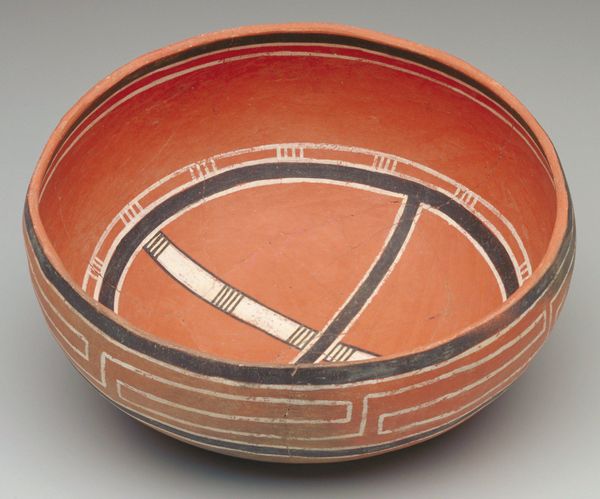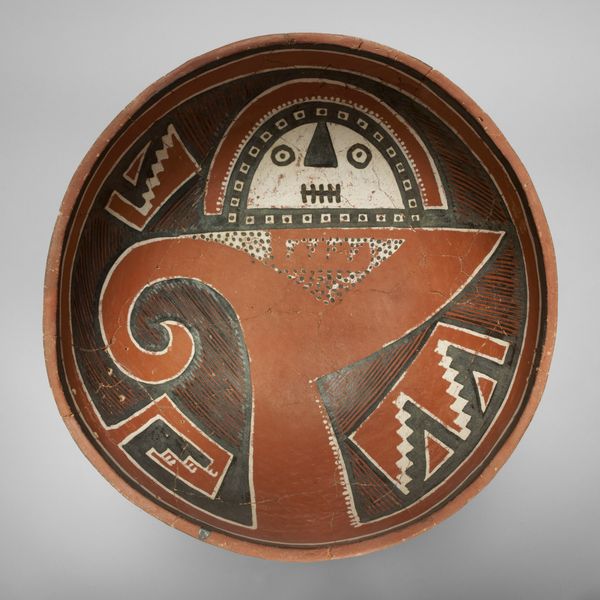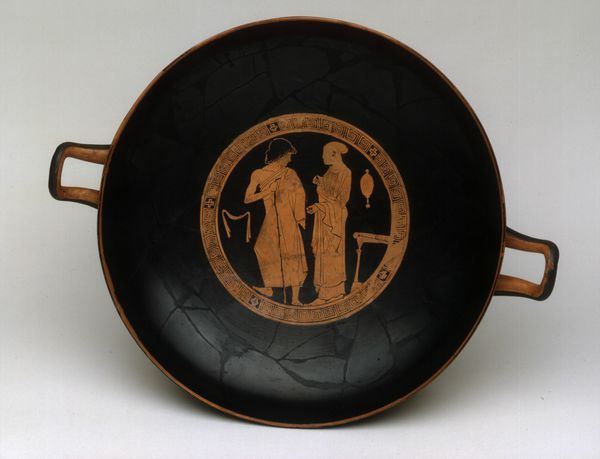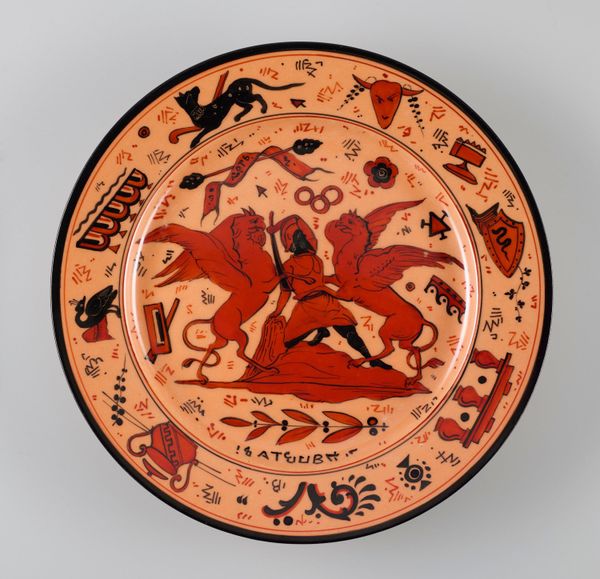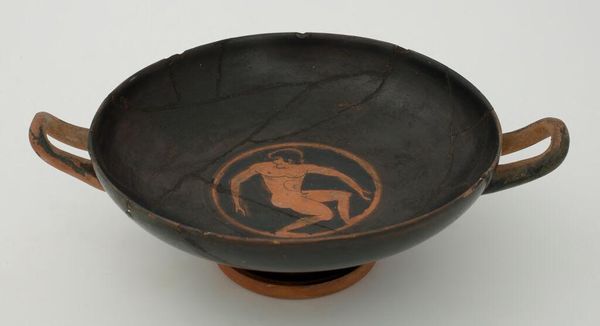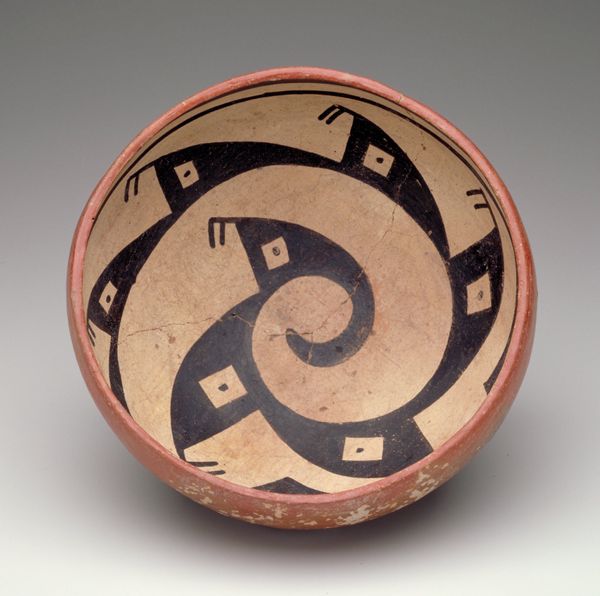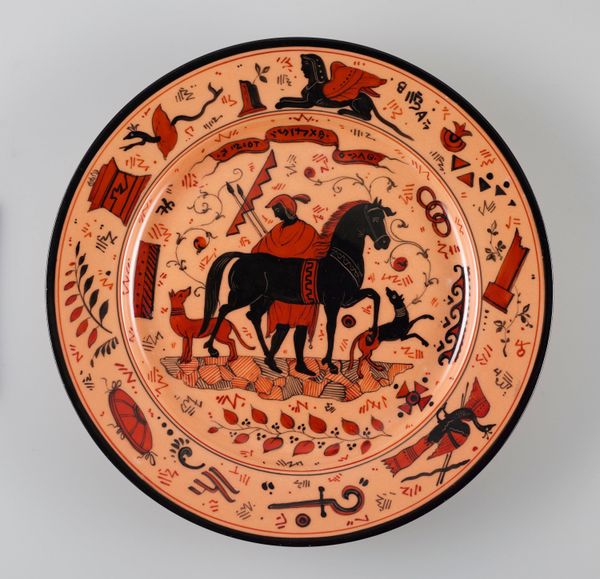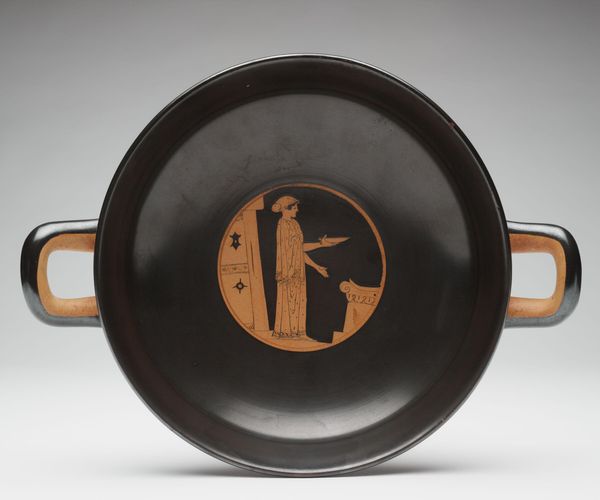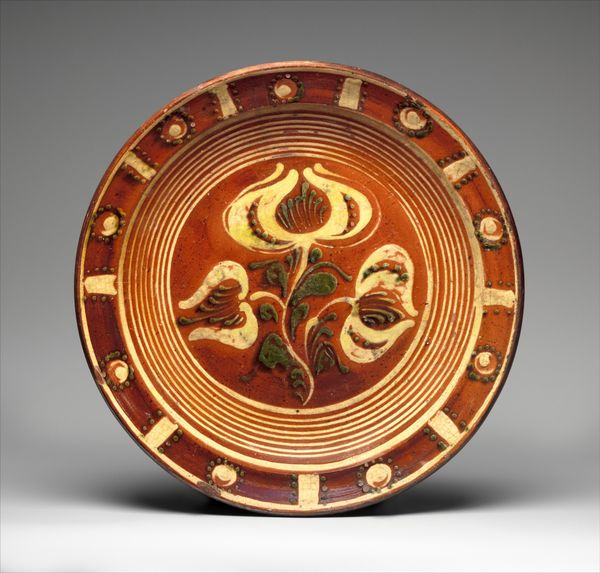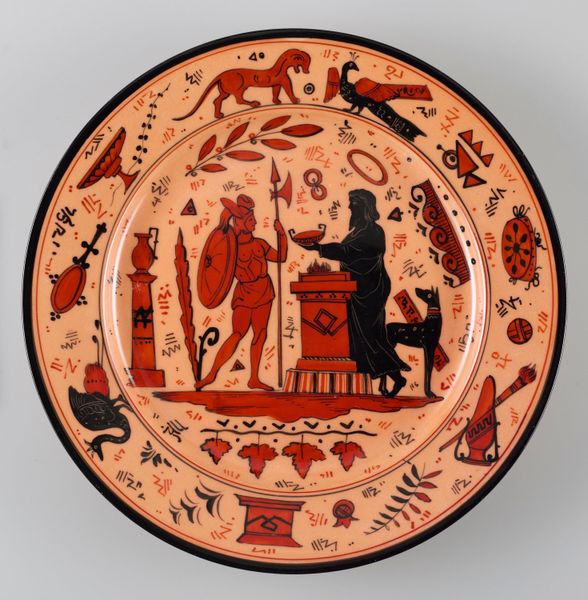
ceramic, earthenware
#
pottery
#
ceramic
#
earthenware
#
geometric
#
ceramic
#
indigenous-americas
Dimensions: 3 3/16 x 9 5/16 in. (8.1 x 23.65 cm)
Copyright: Public Domain
This bowl was made by an artist from the Four Mile people, and it's a beautiful example of their pottery traditions. It's fascinating to consider how the natural resources available in the Southwest shaped artistic production. The colors and designs often reflect the surrounding landscape and the materials that could be sourced locally, with the painted motifs drawing inspiration from the natural world and cosmology. We can see the cultural values and beliefs embedded in the imagery. Designs like these were not just decorative; they were often symbolic, carrying meaning related to clan identity, religious beliefs, and social structures. This bowl would have been made for ritual purposes, not just for decorative display. To understand this bowl fully, we would need to dive into ethnographic studies and archaeological reports. It's a powerful reminder that art is always connected to its social and institutional context.
Comments
minneapolisinstituteofart about 2 years ago
⋮
Perfectly proportioned, geometric, abstract—ancient Puebloan pottery appears almost modern. Thin black lines precisely painted on white surfaces look as though they might have been done by computer instead of with small brushes of yucca-plant fibers. Likewise, the animal designs on Mimbres pottery (1000–1200 CE) are minimalist, stylized figures, cleanly painted on curved surfaces. The smaller pots to the right have the same ageless quality as the ancient ceramics but were made in the 21st century by Acoma artists, descendants of the Ancestral Puebloan people.
Join the conversation
Join millions of artists and users on Artera today and experience the ultimate creative platform.
